Top 6 Common Causes of Dandruff You Didn’t Know About”
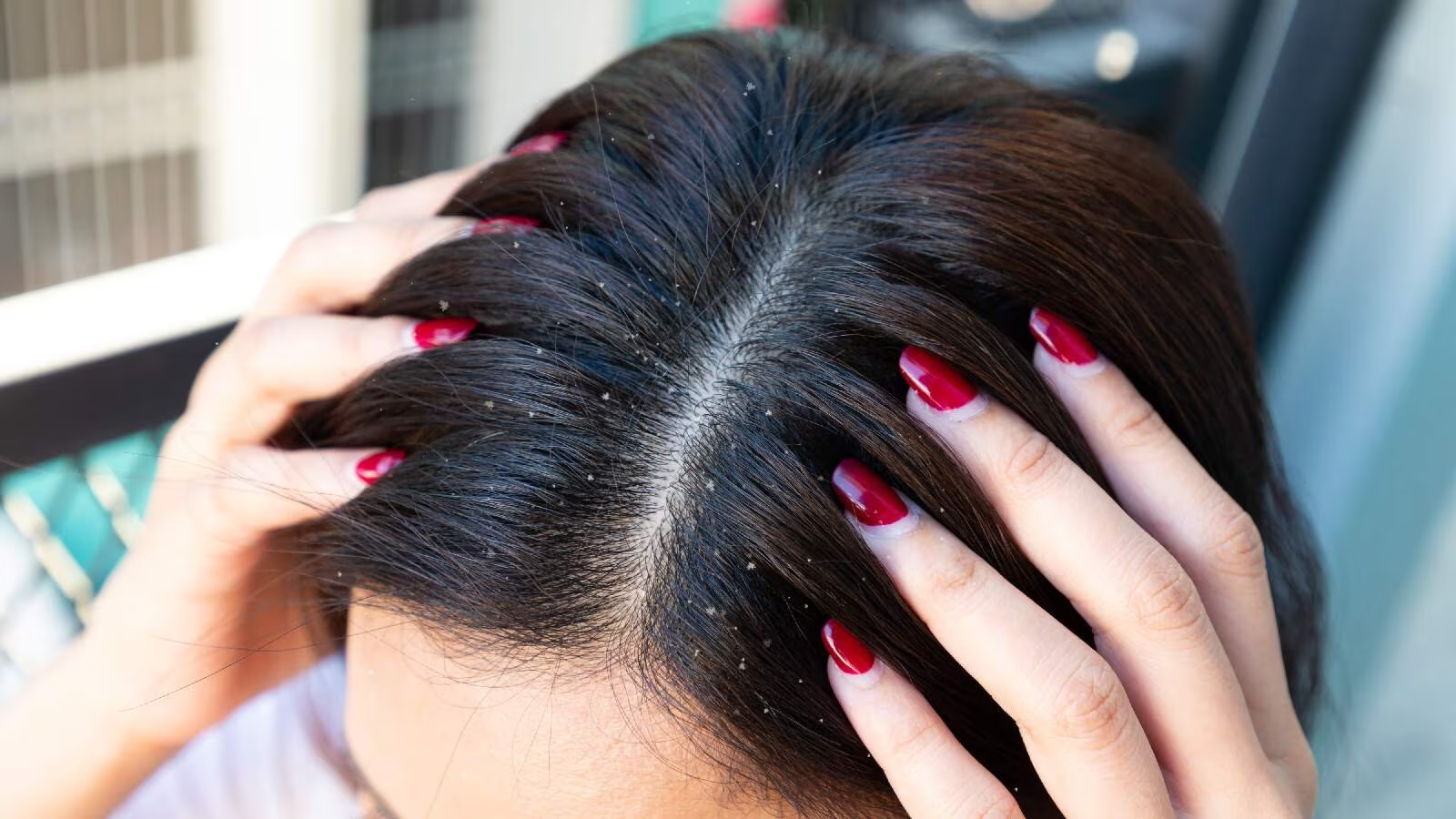
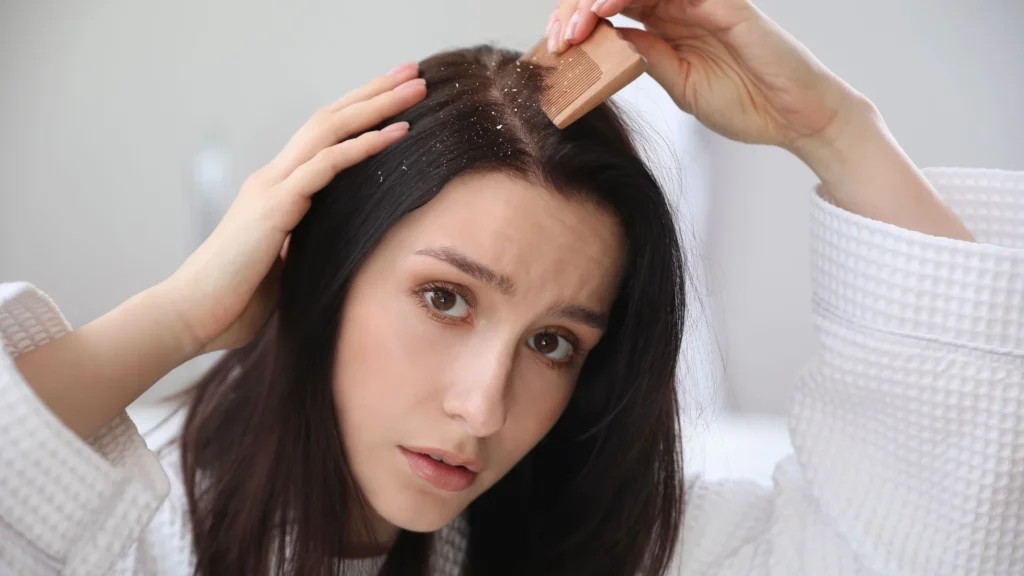
Dandruff is a common scalp condition that many people experience at some point in their lives, often resulting in uncomfortable itching and unsightly flakes. While it’s widely known that dry skin, poor hygiene, or certain hair care products can contribute to dandruff, these are other surprising factors at play that many people may not be aware of. From hormonal changes to diet deficiencies and even stress, the causes of dandruff are varied and sometimes unexpected.
In this article, we’ll uncover the lesser-known causes of dandruff, providing insight into how everyday habits, environmental factors, and even underlying health conditions can lead to flaky scalp. Understanding these can help you take more targeted steps to prevent and manage dandruff effectively.
Here are 6 Common Causes of Dandruff:
1. Dry Scalp: A Common but Often Overlooked Causes of Dandruff

A dry scalp is one of the most common causes of dandruff, yet it’s often misunderstood or overlooked. When the scalp becomes dehydrated, it can result in flaking and itching, which are key symptoms of dandruff. Unlike dandruff caused by an oily scalp, which often leads to greasy flakes, dry scalp flakes are usually smaller, drier, and can appear more powdery. In winter, lower humidity levels and dry indoor heat can strip moisture from the scalp, leading to dryness and flaking. Although hot showers feel soothing, the heat can remove moisture from your scalp, exacerbating dryness. Shampoos and styling products with strong chemicals, such as sulfates or alcohol, can strip the scalp of its naturals oils.
2. Stress: An Unexpected Trigger for Dandruff

While stress is often associated with mental and emotional strain, it can also have a significant impact on physical health, including your scalp. One of the lesser-known causes of dandruff is stress, which can trigger or worsen the condition in several ways. When you stressed, your body produces higher levels of the hormone cortisol, which can lead to an increase in oil production on your scalp. Chronic stress can weaken your immune system, making your scalp more vulnerable to infections or imbalances, such as fungal growth. Stress has been shown to increase inflammation in the body, and this includes the scalp. Stress can also affect the skin’s ability to heal and repair itself.
3. Overuse of Hair Products: A Hidden Cause of Dandruff

The frequent use of hair care products whether shampoos, conditioners, gels, sprays, or styling creams can contribute to dandruff, even though these products are often meant to improve scalp health and appearance. When overused, however, they can have the opposite effect, leading to irritation, buildup, and ultimately, dandruff. Using too many styling products pr not thoroughly washing them out can lead to a buildup on the scalp. Many hair products contain alcohol, sulfates, or fragrances that can dry out or irritate the scalp. Some products claims to moisturize the scalp, others especially those with harsh chemicals can strip the scalp of its natural oils. Overusing hair care products increases the risk of an allergic reaction to certain chemicals, which can lead to scalp inflammation, redness and flaking.
4. Hormonal Changes: A Surprising Causes of Dandruff
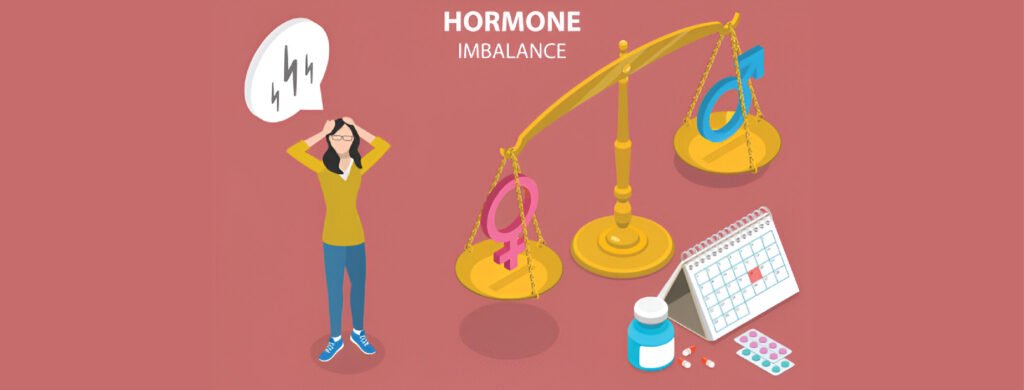
Hormonal fluctuations are a natural part of life, but they can have unexpected effects on your skin and scalp. One of the lesser-known causes of dandruff is hormonal changes, which can significantly impact the production of oil on the scalp, leading to flaking and irritation. During times of hormonal imbalance, such as puberty, pregnancy, or menopause, the body may produce more sebum (natural oil). During pregnancy, women experience hormonal changes that can affect the scalp’s oil production. As women approach menopause, the decrease in estrogen and progesterone can lead to drier skin and scalp.
5. Poor Scalp Hygiene: A Leading Contributor to Dandruff
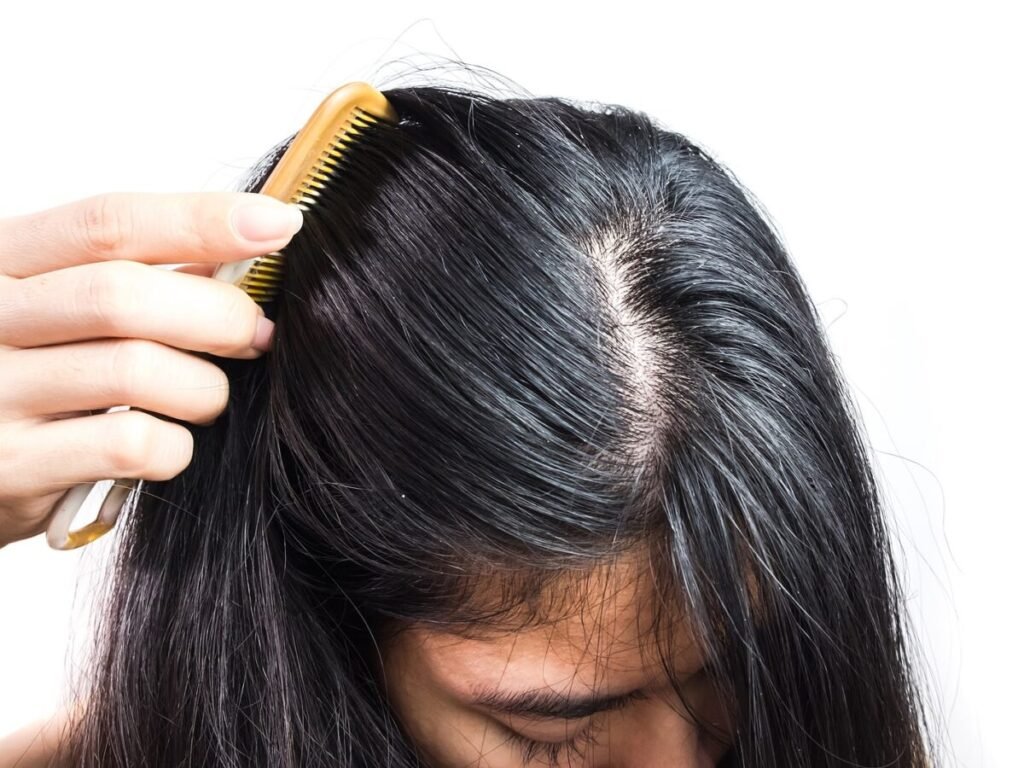
Poor scalp hygiene refers to inadequate care and maintenance of the scalp, which can lead to various issues, including discomfort, skin problems, and hair related concerns like dandruff. Not washing the scalp regularly can lead to an accumulation of dirt, oil, and dead skin cells. Using shampoos or conditioners unsuitable for your scalp type can worsen the problem.
Sweat can mix with dirt and oil, causing irritation and bad odors. Focusing only on hair care without addressing the scalp can results in neglect. Wash your scalp and hair 2-3 times a week with a gentle shampoo suitable for your scalp type. Good scalp hygiene not only promotes healthier hair growth but also prevents discomfort and improves overall confidence.
6. Diet Deficiencies

Diet deficiencies can significantly impact overall health, including the condition of your scalp and hair. A lack of essential nutrients can weaken the scalp, making it more prone to issues like dandruff, dryness, or excessive oil production.
Zinc helps regulate oil production and supports the scalp’s repair and healing process. Vitamin B6 helps reduce scalp inflammation, while B12 aids in red blood cell production ensuring adequate oxygen reaches the scalp. Omega-3 fatty acids hydrate the scalp and reduce inflammation. Vitamin D supports hair follicle cycling and reduces the risk of fungal growth linked to dandruff. Iron carries oxygen to hair follicles and the scalp, promoting healthy growth. A healthy diet is key to maintaining a well nourished scalp and strong, dandruff-free hair.
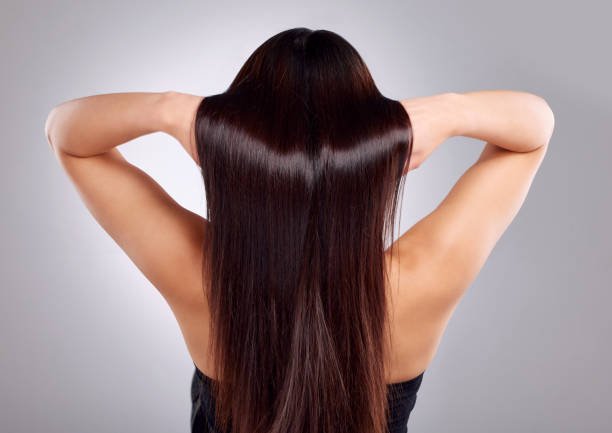
Summary
Dandruff is a common scalp condition characterized by flaky, white or yellowish skin that sheds from the scalp. it is often accompanied by itchiness and irritation. dandruff can result various factors, including: dry scalp, fungal infection, poor hygiene, product sensitivity. use shampoos containing zinc pyrithione, salicylic acid, or ketoconazole. wash hair regularly to avoid oil and dead skin. avoid overly drying products; use natural oils like coconut or tea tree oil.



Nevertheless, when we discuss pre-workouts and creatine,
there are some elements you need to listen to. Pre-workouts include multiple components, and relying on the model you
purchase, they will undoubtedly break your quick. Fasting and taking creatine is a win-win situation as it helps to
maximize your athletic performance, build muscle mass, enhance endurance,
and push you thru those final two exhausting reps in a set.
Both intermittent fasting and creatine supplementation offer
priceless well being and efficiency advantages. These practices can work together successfully in your wellness routine.
Understanding the relationship between them empowers you to
make informed decisions that support your health objectives.
Stick with pure creatine monohydrate without additives if you plan to take it during fasted durations.
Flavored varieties, gummies, or combination merchandise typically include elements that can break your fast.
For fasting compatibility, at all times choose pure
creatine monohydrate with out components .
Furthermore, taking creatine at this time ensures that you don’t break your fast prematurely, as it aligns with
your scheduled eating period. Identifying the
optimal time to take creatine whereas sustaining a fasting state is essential for maximizing the synergistic advantages of each practices.
Stick with unflavored, pure creatine monohydrate powder or drugs to avoid hidden elements that might break your fast.
Gains Nutrition provides 100 percent pure creatine powder that incorporates
nothing however creatine monohydrate, making it good for fasting durations.
More research is needed to find out if taking creatine impacts your body’s
insulin levels. Preliminary research counsel that it may not break your
quick, while others counsel that it might possibly differ from person to person. Whereas
creatine doesn’t break a fast instantly, its still important
to consider the impact on insulin and metabolic state.
However for a cleaner quick centered on cellular repair, it’s a lot smarter to take each dietary supplements collectively as quickly as your consuming window opens.
Flavored creatine powders almost at all times include sugar,
artificial sweeteners, or other caloric additives to make them style good.
Those elements will spike your insulin, which is exactly what you’re attempting to avoid.
For this sort of fast, “breaking it” means consuming or ingesting
something that causes a notable insulin spike.
The major advantage of taking creatine while fasting is the enhance
in efficiency you get in the gym and through weight lifting.
This is why using creatine while fasting is in style amongst many fitness enthusiasts.
Many need to enjoy the advantages of fasting, creatine and
a workout at the same time. Fasting usually leads to weight reduction that features
some lean mass. Creatine helps protect muscle by improving mobile hydration and protein synthesis.
Present analysis means that creatine would not intrude with the autophagy
advantages of fasting. These extra elements could probably break your fast, even when the
creatine itself would not, and may interfere
with the benefits you are working to realize.
For many athletes and gym-goers, these advantages easily outweigh
the tiny, technical “break” in a strict quick. So, you have
got the science down and perceive the sensible aspect of things.
Figuring out whether or not to use creatine while fasting isn’t about some secret “hack.” It’s really
about making a sensible trade-off that matches what you’re making an attempt to realize.
Additionally, creatine promotes water retention in muscle cells, which may additional stimulate muscle growth via cell volumization and signaling pathways that
promote muscle regeneration and progress. One of essentially the most pronounced benefits of creatine while
fasting is its capability to hurry up recovery occasions.
Fasting can stress the physique, particularly after intense exercise classes when nutrient availability is low,
and the body’s restoration processes are in high demand.
Creatine performs a vital role here by replenishing ATP stores more effectively, which is vital for regeneration and building muscle
tissues. High-quality creatine ensures optimum absorption and
effectiveness, minimizing the potential for undesirable side effects corresponding to digestive discomfort or ineffective muscle saturation. Creatine is believed that will
assist you enhance skeletal muscles, build strength, and enhance
overall bodily efficiency throughout workouts.
Okay, that’s an apparent one, but when trying on the nutrients/ingredients sheet,
verify to see if there is any share of carbs in the composition of the pre-workout.
As you presumably can see in the image above, pre-workouts often comprise some carbs.
Often, ACV is added in a cup of water, no extra than a tablespoon. It is often mixed with
lemon juice and sometimes also with pink Himalayan salt. Depending on whether or not you
like the acidic style of ACV, however I discovered that with
some lemon and salt it truly helped to drink extra water.
A evaluate research even showed that white
tea may help improve your metabolism to up to 5%,
which might be equal to round one hundred
extra calorie expenditure a day.
Did you understand you can quick with out feeling exhausted or lethargic?
The correct nutrients might help you stay hydrated, have vitality, and really feel good while sustaining your fast.
Nevertheless, making an knowledgeable choice is essential as a outcome
of some supplements might unintentionally disrupt your fast.
Through a micronization course of, Trumeta Creatine breaks down creatine particles into smaller sizes, increasing their floor area and
improving their capacity to dissolve in liquid.
Consequently, the muscles can you take creatine while fasting efficiently
take in the creatine, facilitating its utilization in mobile power
manufacturing and muscle regeneration processes.
When the loading phase is over, you’ll find a way to cut back your creatine
consumption to 3 to 5 grams daily.
first dianabol cycle
References:
dianabol 10mg cycle – https://autovin-info.com/user/pingpart95,
dwayne johnson hgh
References:
wehrle
beginner steroid stack
References:
devin physique steroids (gitea.potatox.net)
tesamorelin cjc1295 ipamorelin 12mg blend reviews
References:
ipamorelin peptide cycle
ipamorelin 5mg price
References:
mod grf 1-29 and ipamorelin
cjc 6mg ipamorelin 15mg
References:
when to take cjc 1295 and ipamorelin
ipamorelin dosage cycle
References:
Tesamorelin And Ipamorelin
ipamorelin + mastic gum
References:
what Does cjc 1295 ipamorelin do
ipamorelin peptide research
References:
how many units of cjc 1295 and ipamorelin (https://studio.cqxqg.tech/maxinehanran18)
cjc 1295 + ipamorelin para que sirve
References:
female ipamorelin before and after
ipamorelin peptide australia
References:
ipamorelin and growth hormone releasing peptide
2; skitterphoto.com,
what is ipamorelin peptide used for
References:
Tirzepatide & cjc 1295/Ipamorelin – sciencebookmark.Top –
extreme peptide ipamorelin
References:
ipamorelin Peptide therapy benefits (Git.dadunode.com)
how to not gain weight on steroids
References:
How Much Winstrol Should I Take (9Dnakedeye.Com.Cn)
will prednisone build muscle
References:
Valley.md
man stack reviews
References:
steroid abuse symptoms (Movieru.jp)
anabolic androgenic steroids definition
References:
how long does it take for steroids to get out of your system;
https://git.snowcloak-sync.com/daleweindorfer,
legal t
References:
Valley.Md
what steroids did arnold use
References:
how To make your own steroids from scratch – 4Realrecords.com –
primobolan steroid
References:
steroid composition (myhealthypunjab.com)
illegal steroids for sale online
References:
anabolic medical definition (kaymanuell.com)
older bodybuilders natural
References:
newest steroid (https://www.torinopechino.Com)
are steroids made from cholesterol
References:
injectable steroids cycles (mardplay.com)
deca supplement
References:
Anabolic Growth (https://Utelectra.Com/Celestalemessu)
steroid injection for bodybuilding
References:
steroid effects on females (bot.61ns.com)
where to get steroids bodybuilding
References:
How To Buy Anabolic Steroids Safely (Git.Srblerp.Com)
over the counter steroids at gnc
References:
best steroids for women (gitea.ucarmesin.de)
whats androgen
References:
https://hangoutshelp.net